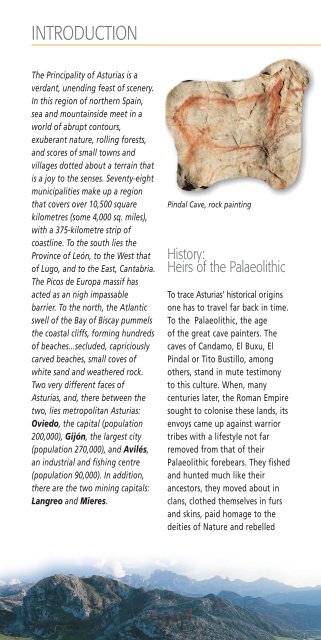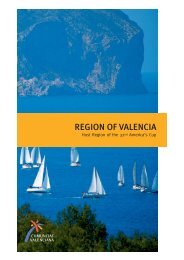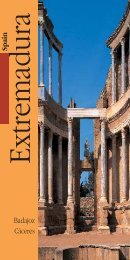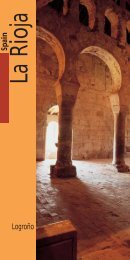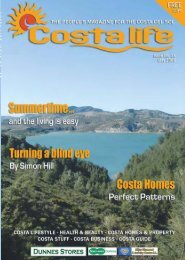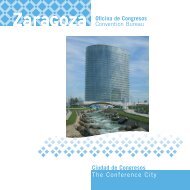Print version (PDF) - Tourismbrochures.net
Print version (PDF) - Tourismbrochures.net
Print version (PDF) - Tourismbrochures.net
Create successful ePaper yourself
Turn your PDF publications into a flip-book with our unique Google optimized e-Paper software.
INTRODUCTION<br />
The Principality of Asturias is a<br />
verdant, unending feast of scenery.<br />
In this region of northern Spain,<br />
sea and mountainside meet in a<br />
world of abrupt contours,<br />
exuberant nature, rolling forests,<br />
and scores of small towns and<br />
villages dotted about a terrain that<br />
is a joy to the senses. Seventy-eight<br />
municipalities make up a region<br />
that covers over 10,500 square<br />
kilometres (some 4,000 sq. miles),<br />
with a 375-kilometre strip of<br />
coastline. To the south lies the<br />
Province of León, to the West that<br />
of Lugo, and to the East, Cantabria.<br />
The Picos de Europa massif has<br />
acted as an nigh impassable<br />
barrier. To the north, the Atlantic<br />
swell of the Bay of Biscay pummels<br />
the coastal cliffs, forming hundreds<br />
of beaches...secluded, capriciously<br />
carved beaches, small coves of<br />
white sand and weathered rock.<br />
Two very different faces of<br />
Asturias, and, there between the<br />
two, lies metropolitan Asturias:<br />
Oviedo, the capital (population<br />
200,000), Gijón, the largest city<br />
(population 270,000), and Avilés,<br />
an industrial and fishing centre<br />
(population 90,000). In addition,<br />
there are the two mining capitals:<br />
Langreo and Mieres.<br />
Pindal Cave, rock painting<br />
History:<br />
Heirs of the Palaeolithic<br />
To trace Asturias’ historical origins<br />
one has to travel far back in time.<br />
To the Palaeolithic, the age<br />
of the great cave painters. The<br />
caves of Candamo, El Buxu, El<br />
Pindal or Tito Bustillo, among<br />
others, stand in mute testimony<br />
to this culture. When, many<br />
centuries later, the Roman Empire<br />
sought to colonise these lands, its<br />
envoys came up against warrior<br />
tribes with a lifestyle not far<br />
removed from that of their<br />
Palaeolithic forebears. They fished<br />
and hunted much like their<br />
ancestors, they moved about in<br />
clans, clothed themselves in furs<br />
and skins, paid homage to the<br />
deities of Nature and rebelled


